Convalescent (military)
In 1914, when war broke out, Mr William Perkins Bull, K.C. (1870-1928), a Canadian lawyer and businessman living in London, tried to enlist for active service. He was refused due to his age (he was 44 years old) and possibly his weight (18 stone - 115 kilos) and perhaps also because he had a wife and seven young children (the eldest being 16 years).
Instead, the Perkins Bulls began to invite Canadian officers on leave to their home at No. 7 Heathview Gardens for dinners and other events. These social gatherings developed into a wartime institution and their home became a hostel for the reception and entertainment of Canadians who came overseas in the course of the war. Additional beds were made available so that at least 2 dozen could be accommodated at the house. As the war progressed, some 3 to 4 dozen men would be present at breakfast and dinner, so that the chairs and settees were in use 24 hours a day.
Many of their guests were convalescing after being wounded at the front and, in 1916, on seeing so many neurasthenic and ill and needing motherly care, Mrs Perkins Bull suggested to her husband that the vacant house across the road, No. 9 Heathview Gardens, be rented for use as a convalescent hospital.
The Perkins Bull Hospital for Convalescent Canadian Officers was officially opened on 19th July 1916 by Sir Charles Wakefield, the Lord Mayor of London, accompanied by the Lady Mayoress and two of the Sheriffs. A gold latchkey was presented to the Lady Mayoress and also to Mrs Perkins Bull (the second key was a gift from the first five patients, who had been admitted in June, and was inscribed with their names).
The Hospital was affiliated to Queen Alexandra's Military Hospital at Millbank and had 25 beds (later increased to 32), with 3 to 4 beds in the dining room and in each of the bedrooms. The building overlooked Putney Heath and, from its windows, the patients could see the Canadian ensign which was flown on Wimbledon Common.
The staff consisted of a Matron, who had trained at Hamilton in Ontario, an Assistant Matron and 14 Canadian V.A.D.s. The latter were girls belonging to the best Canadian families, mainly from Toronto; they attended to the cooking and serving of meals, as well as to the nursing and housework.The Matron's uniform was a white pique dress, a folded kerchief and a mob cap with a narrow band of black velvet, while the V.A.D.s wore dresses of a pretty shade of pink with transparent aprons and an army cap. All wore the Canadian ensign mounted on red on the left arm.
Mr Perkins Bull had presented the Hospital to the Canadian government for use as an auxiliary hospital. The Hospital received the usual capitation payment from the government, as well as donations from the Canada and Elstree Lodges and from private donors. The Perkins Bulls remained involved in its management and upkeep, and officiated at grand daily dinners for 40 or more, and in the entertainment of their fellow countrymen. Convalescent patients could walk over from the Hospital to the Perkins Bulls' home, where dancing took place and to use the tennis courts, which were at their disposal. As the journey took only 45 minutes from the Strand to Putney, twice as many guests would be present at dinner than shown on the Hospital roster. During the three years the Hospital flourished, at the cost of many tens of thousands of dollars.
The Hospital became legendary. It was visited by King George V and Queen Mary, as well as the Prime Ministers of Canada and other allied countries. The scene of many war romances, the Hospital became affectionately termed 'the Perkins Bull Matrimonial Bureau'. Of the original staff of 20 V.A.D.s, only one remained unmarried.
The Hospital closed in the summer of 1919.
During the war some 1,000 Canadians had passed through the two houses as guests or as patients. Notable patients included the flying ace William Avery 'Billy' Bishop (1894-1956) and the future Governor General of Canada, Georges Vanier (1888-1967), who lost a leg during the conflict.
Present status (April 2011)
No. 9 has been divided into three apartments.
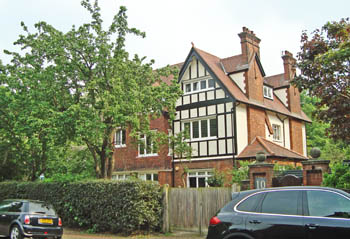
The former Hospital building on the corner of Heathview Gardens and Telegraph Road.
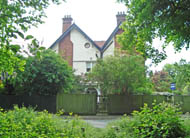
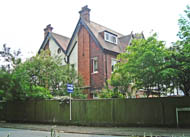
The house, as seen from Telegraph Road.
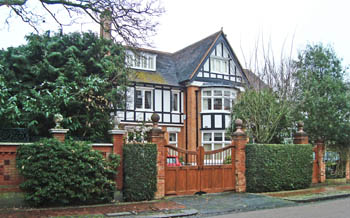
No. 7 Heathview Gardens, where the Perkins Bulls held their social evenings. It was once the home of the explorer Sir Ernest Shackleton (1874-1922).
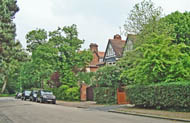
The former Hospital building at No. 9, as seen from No. 7 Heathview Gardens.
(Author unstated) 1916 Care of the wounded. British Journal of Nursing, 10th June, 498.
(Author unstated) 1916 The Perkins Bull Convalescent Hospital for Canadian officers. British Journal of Nursing, 29th July, 91.
(Author unstated) 1917 List of the various hospitals treating military cases in the United Kingdom. London, H.M.S.O.
Perkins Bull W 1935 From Brock to Currie: the Military Development and Exploits of Canadians in General and of the Men of Peel in Particular. Toronto, The Perkins Bull Foundation, George G. McLeod. pp 462-465.
Cowley D (ed.) 2000 Georges Vanier, Soldier: The Wartime Letters and Diaries, 1915-1919. Toronto, Dundurn Press.
http://dsp-psd/pwgsc/gc/ca
http://regimentalrogue.com
www.archive.org
www.britishpathe.com
www.canadiangreatwarproject.com
www.collectionscanada.gc.ca
www.heritagefdn.on.ca
www.pinet.on.ca
www.orangeordersouthernengland.org
www.southrosedale.org
www.zoominfo.com
Return to home page